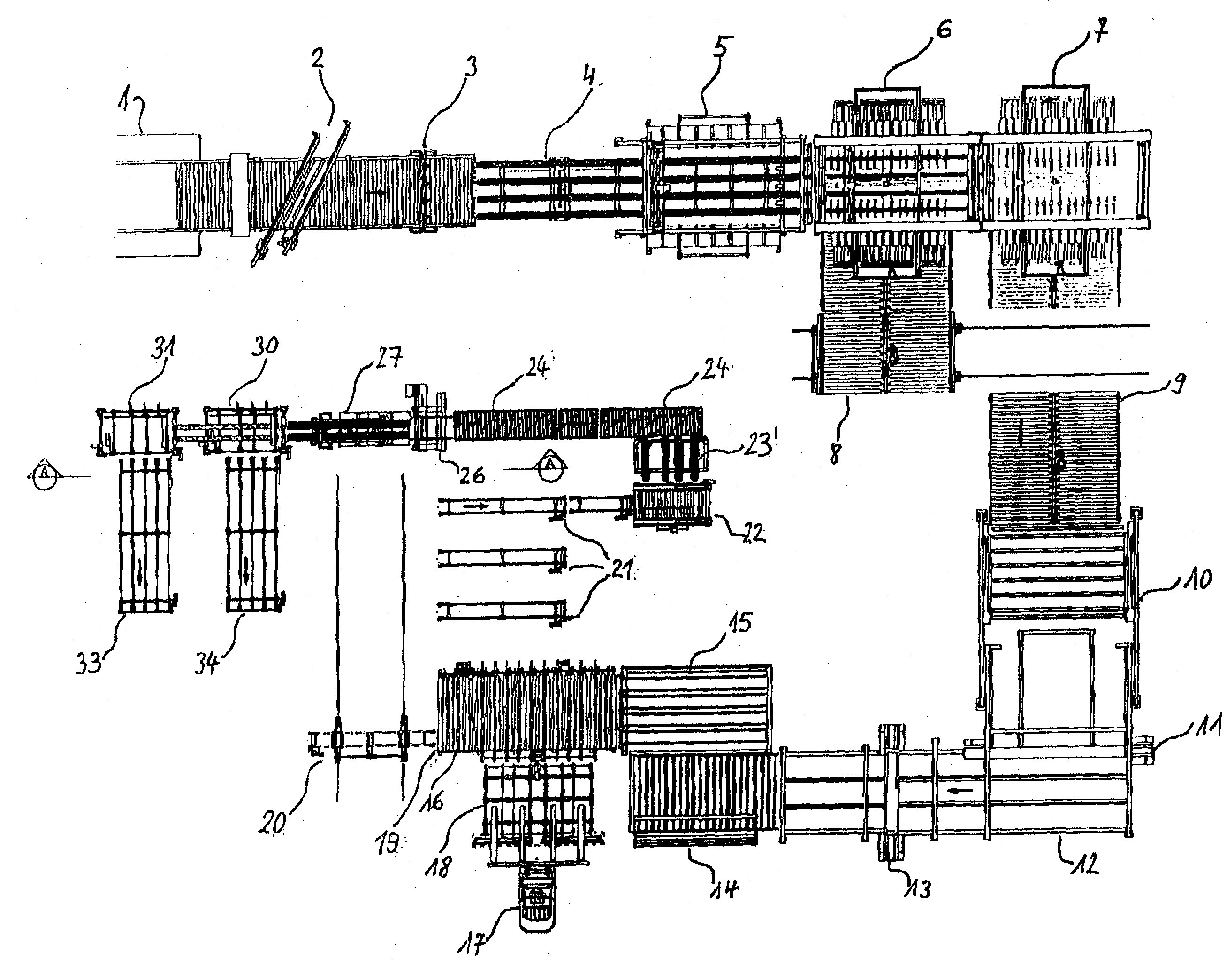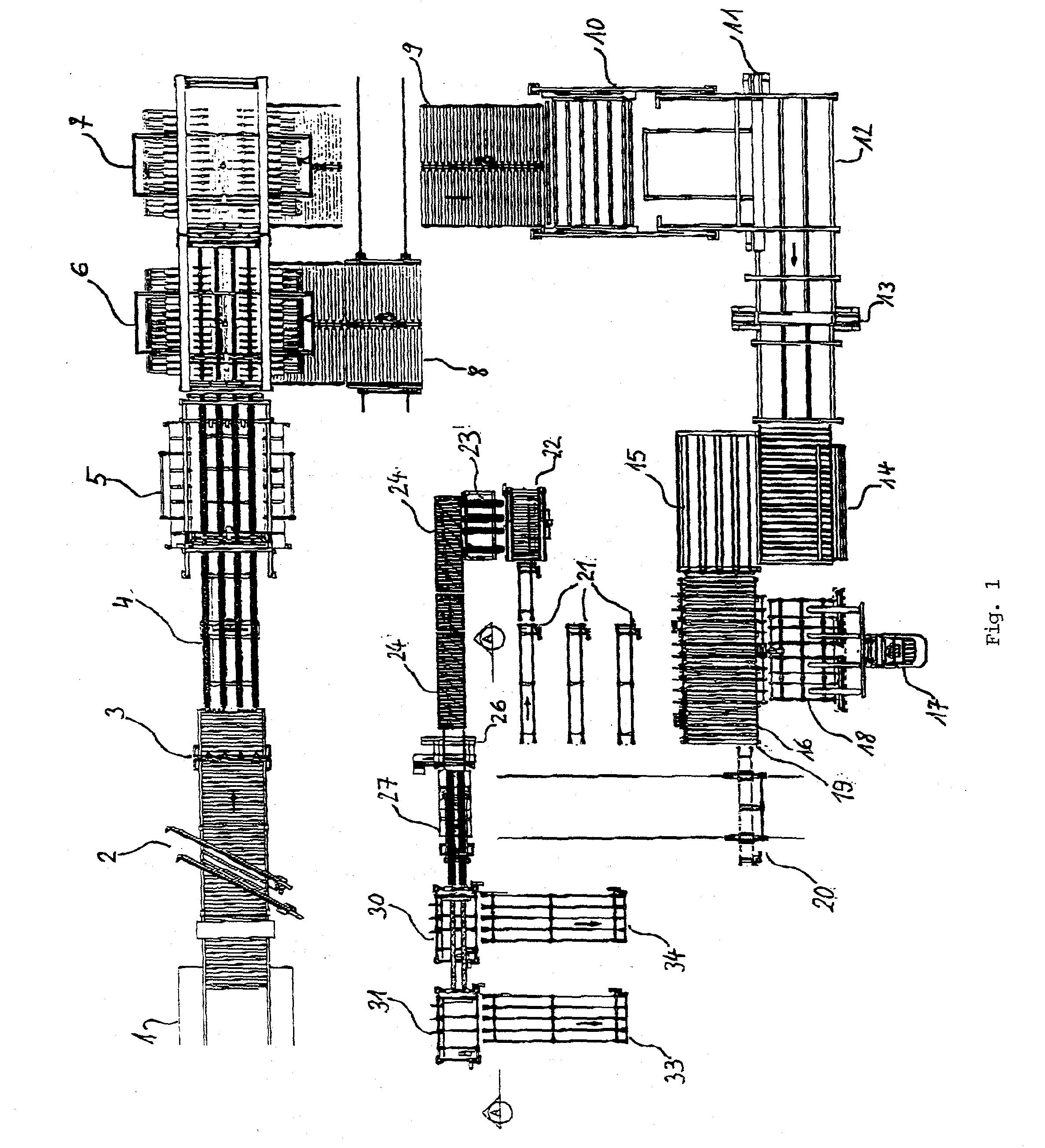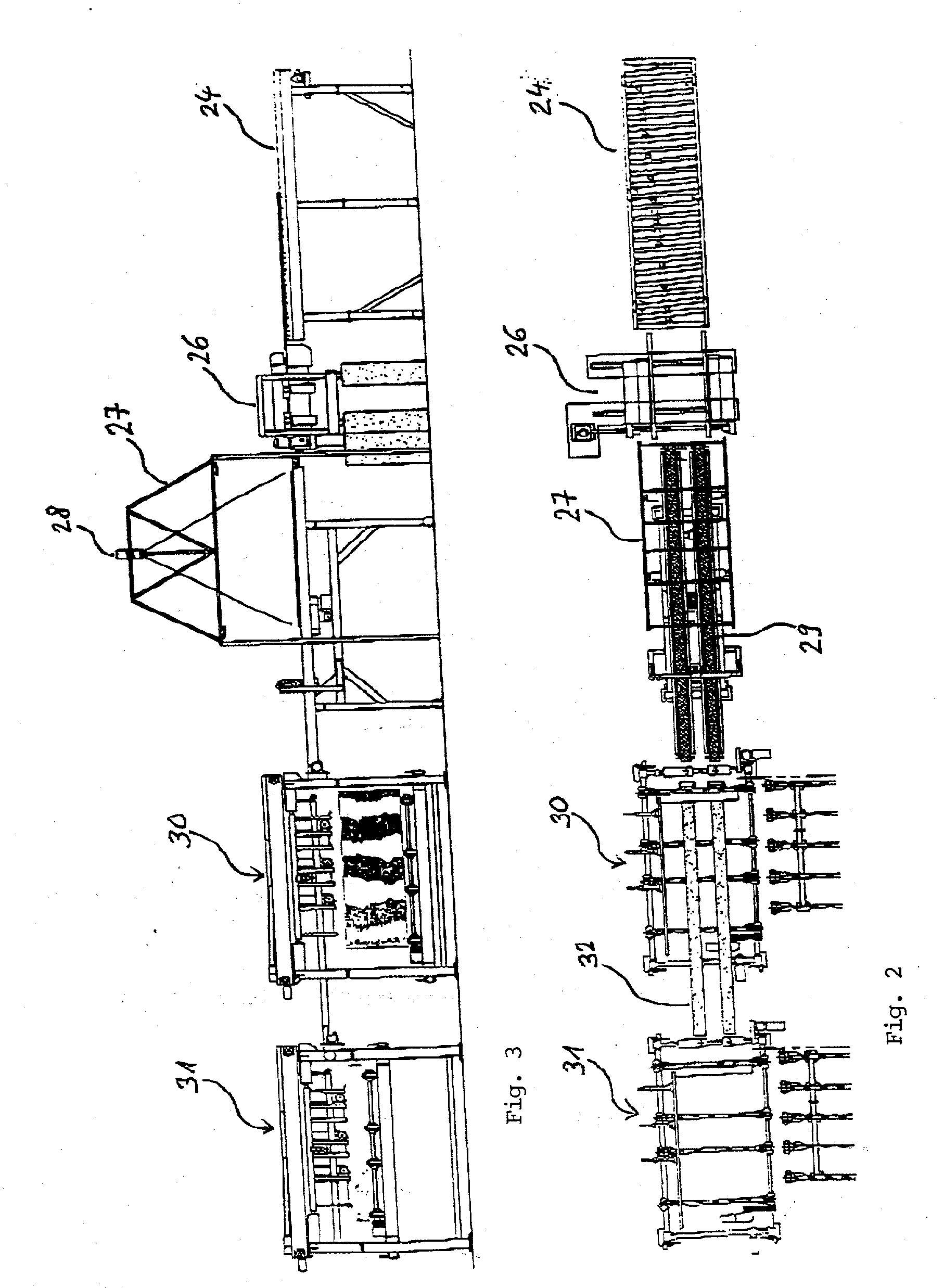Device for marking and analyzing defects in a system for cutting boards to size made of wood at least in part
a technology of cutting boards and defects, applied in the direction of metal sawing equipment, material testing goods, sawing equipment, etc., can solve the problems of high visual appeal requirements, gas contamination or harmful effects of press heat, and the inability to keep track of device defects,
- Summary
- Abstract
- Description
- Claims
- Application Information
AI Technical Summary
Benefits of technology
Problems solved by technology
Method used
Image
Examples
Embodiment Construction
[0037] Referring now to FIG. 1 there is illustrated in the upper portion on the left a conventional continual board production press 1 for OSB production. At the output thereof working in the direction of production from left to right is a roll stand unessential to the invention and only required for press downtime, as well as a conventional double diagonal saw 2. The double diagonal saw 2 parts a continuous stream of boardstock furnished by the board production press 1 by cross-cuts into masterboards. Due to the diagonal arrangement the saw blade can be included in the movement of the boardstock.
[0038] The boards cut-to-length by the double diagonal saw 2 are conveyed from the board production press 1 through the saw 2 by a roller conveyor which guides the boards cut-to-length to a portal-type configured means 3. The means 3 is a combination of a defect detection means which scans the transmission of the boards via a plurality of ultrasonic emitters and ultrasonic detectors located...
PUM
| Property | Measurement | Unit |
|---|---|---|
| size | aaaaa | aaaaa |
| to-size | aaaaa | aaaaa |
| defect | aaaaa | aaaaa |
Abstract
Description
Claims
Application Information
 Login to View More
Login to View More - R&D
- Intellectual Property
- Life Sciences
- Materials
- Tech Scout
- Unparalleled Data Quality
- Higher Quality Content
- 60% Fewer Hallucinations
Browse by: Latest US Patents, China's latest patents, Technical Efficacy Thesaurus, Application Domain, Technology Topic, Popular Technical Reports.
© 2025 PatSnap. All rights reserved.Legal|Privacy policy|Modern Slavery Act Transparency Statement|Sitemap|About US| Contact US: help@patsnap.com



